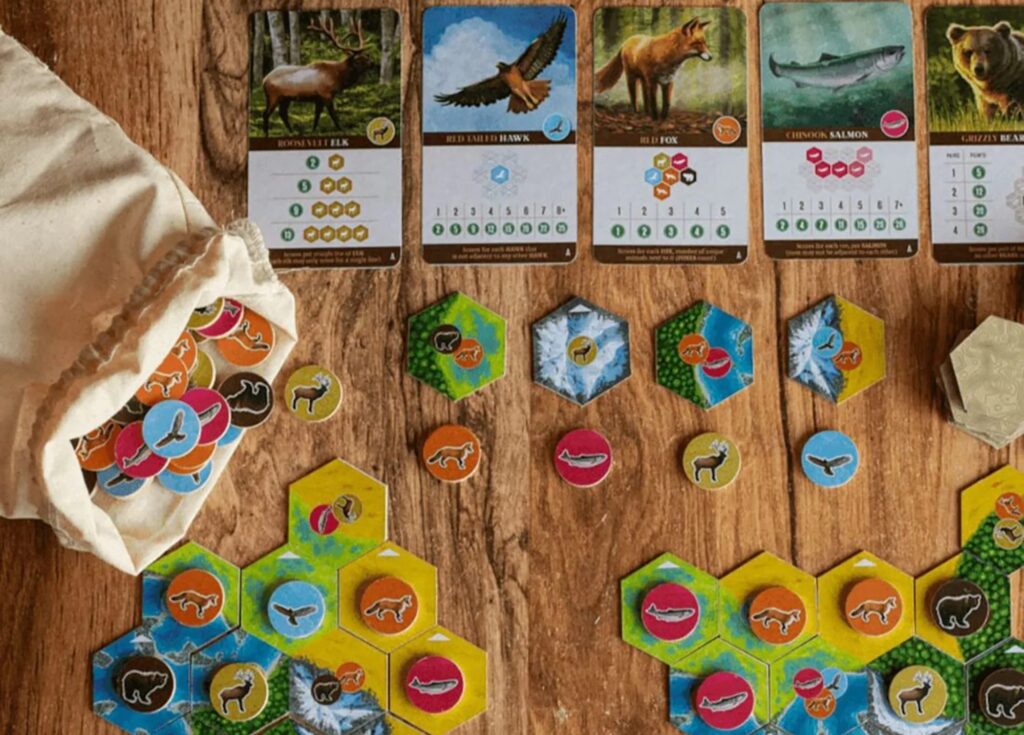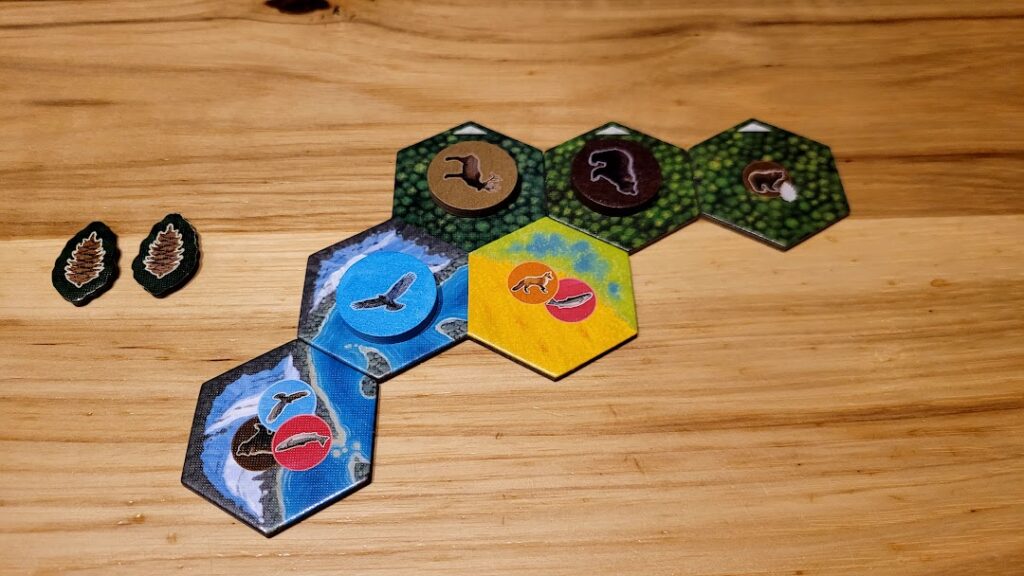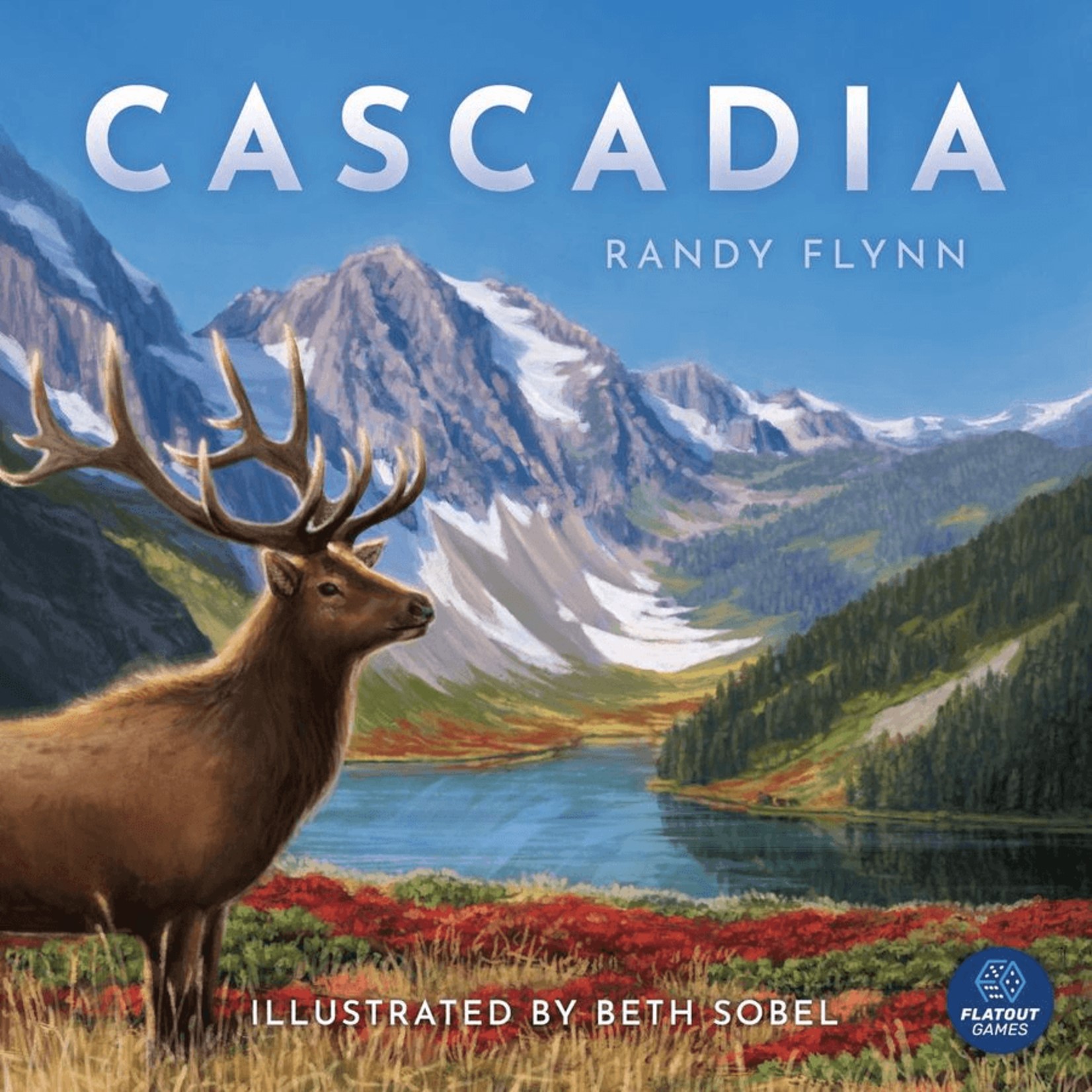As someone who enjoys tile-laying games and nature themes, I was immediately intrigued by Cascadia. After a few playthroughs, I can confidently say it’s earned a permanent spot on my game shelf. Designed by Randy Flynn and beautifully illustrated by Beth Sobel, Cascadia offers a thoughtful and relaxing puzzle experience that still manages to spark meaningful choices and competitive energy.
The Premise
In Cascadia, players build their own landscapes by placing hexagonal habitat tiles and populating them with wildlife tokens. Each turn, you draft a tile and a wildlife token from a shared pool, and place them in your personal environment. The goal is to build contiguous regions of terrain (forests, mountains, wetlands, etc.) while also arranging animals (like bears, elk, salmon, foxes, and hawks) to meet scoring objectives.
What I love most about this setup is the blend of freedom and constraint. Every combination of tile and token presents a new little puzzle: Do you take the tile that extends your forest region or the one that supports your salmon run? Do you take the fox now because it fits your animal pattern, even if the tile isn’t ideal?

Gameplay Overview
The game is played over 20 turns—each player takes the same number of turns—and a typical game takes around 30 to 45 minutes. It scales well between 1 and 4 players (yes, it has a solid solo mode too). On your turn, you:
- Choose a pair from four randomly available tile-token combinations.
- Place the habitat tile adjacent to your existing environment.
- Place the wildlife token on a matching habitat tile—if possible.
Scoring comes from two areas:
- Wildlife objectives: Each animal species has several potential scoring cards, randomly selected at the start of the game. For example, bears might score in pairs, in groups of exactly three, or for not being adjacent to other bears.
- Habitat corridors: You’re also rewarded for having the largest contiguous areas of each terrain type, as well as for achieving your unique nature token bonuses.
Despite its seemingly gentle tone, Cascadia has surprising depth. The random combination of tiles and tokens each round forces you to adapt, and planning ahead while remaining flexible is part of the fun.

What Makes Cascadia Special
I’ve played many tile-laying games—Carcassonne, Isle of Skye, and Kingdomino, to name a few—but Cascadia brings a refreshing twist. Instead of focusing on a shared map, each player builds their own tableau. This makes turns quick and downtime minimal, while still offering interaction through the shared pool of choices.
The dual-layered puzzle—landscape and wildlife—is especially satisfying. I often find myself torn between expanding a mountainous region and completing a tricky elk formation, and those moments of tension make every turn engaging.
Another major win: the game’s accessibility. It’s easy to teach, the iconography is intuitive, and it accommodates all skill levels. You can play casually with family or dial it up with more strategic friends by using the more complex wildlife scoring cards.
Also, let’s talk about the art. Beth Sobel’s illustrations are a perfect match for the serene theme. The wildlife tokens are charming, and the tiles form a beautiful patchwork of nature by the end of the game. It’s the kind of game that looks great on the table and feels good to play.
Final Thoughts
Cascadia strikes a rare balance—it’s approachable without being shallow, peaceful without being passive, and puzzly without being paralyzing. It offers replayability through varied animal scoring combinations, a gentle but engaging decision space, and just enough randomness to keep things fresh.
If you enjoy tile-laying games or nature-themed experiences, Cascadia is absolutely worth your time. Whether you’re looking for a laid-back weeknight game or a thoughtful solo puzzle to unwind with, this one delivers.
Highly recommended.

